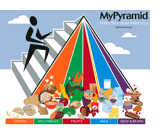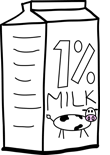Often New Year’s resolutions tend to be grand and unrealistic. Perhaps that is why the failure rate is so high. Sometimes we do the same with our church plans. In the hope of covering all bases and avoiding criticism that plans are too narrow or neglect an important dimension, we try to cover the waterfront. There is a place for such comprehensive goals. But there is also a place for much greater focus on things that to outsiders may seem utterly narrow.
Every single church must choose to focus on what in particular makes sense to everyone because it fits where you are and what God is calling you to do now.
By comparison, it is good for parents to know best practices for parenting. If they read books or attend workshops, the range of parental responsibilities will be covered. But good parents do not live their lives trying to implement a range of tasks. They focus on what is most needed by a particular child at a particular time. They will draw from all they know but will not feel guilty if, in any year, they are not giving equal weight and attention to the full range of parental roles.
A church begins with the biblical witness as its mandate. Then churches will often have their own mission statements, core values, and goals for various ministry areas. Now denominations are seeking to help congregations renew by providing overall plans and goals. All these are good unless they prevent the kind of laser focus that a good parent gives to the “one thing” that is most needed right now. Both approaches are of value but in their appropriate places.
 Chip and Dan Heath report on researchers at West Virginia University trying to persuade people in a target area to eat a healthier diet. A logical place for them to begin would be to use the Food Pyramid provided by the U.S. Department of Agriculture to promote good eating patterns. They did not. That would be like a church spending all year promoting its comprehensive plan. There is no change in behavior when you are trying to do everything at once. Instead, the researchers focused on one thing, persuading people to drink skim or 1% milk instead of whole milk. Milk is a common food that is nutritious but can be a major source of saturated fat when whole milk is used.
Chip and Dan Heath report on researchers at West Virginia University trying to persuade people in a target area to eat a healthier diet. A logical place for them to begin would be to use the Food Pyramid provided by the U.S. Department of Agriculture to promote good eating patterns. They did not. That would be like a church spending all year promoting its comprehensive plan. There is no change in behavior when you are trying to do everything at once. Instead, the researchers focused on one thing, persuading people to drink skim or 1% milk instead of whole milk. Milk is a common food that is nutritious but can be a major source of saturated fat when whole milk is used.
If your job for the next year was to reduce obesity in one county, which of the graphics shown, the Food  Pyramid or the 1% Milk image, do you think would change the most behavior? The researchers found that in the intervention area, the share of low-fat milk sold went from 18 percent before the campaign to 35 percent six months later.
Pyramid or the 1% Milk image, do you think would change the most behavior? The researchers found that in the intervention area, the share of low-fat milk sold went from 18 percent before the campaign to 35 percent six months later.
What might this mean for churches? You always want the big picture plan, but every single church must choose to focus on what in particular makes sense to everyone because it fits where you are and what God is calling you to do now. Your focus will change eventually. In fact, success on something narrow just may produce a field of energy that makes many other things possible. But as long as you try to improve everything at once, very little is likely to be accomplished.
Related Resources:
- Bearing Fruit: Ministry with Real Results by Lovett H. Weems, Jr., and Tom Berlin
- Take the Next Step: Leading Lasting Change in the Church by Lovett H. Weems, Jr.







